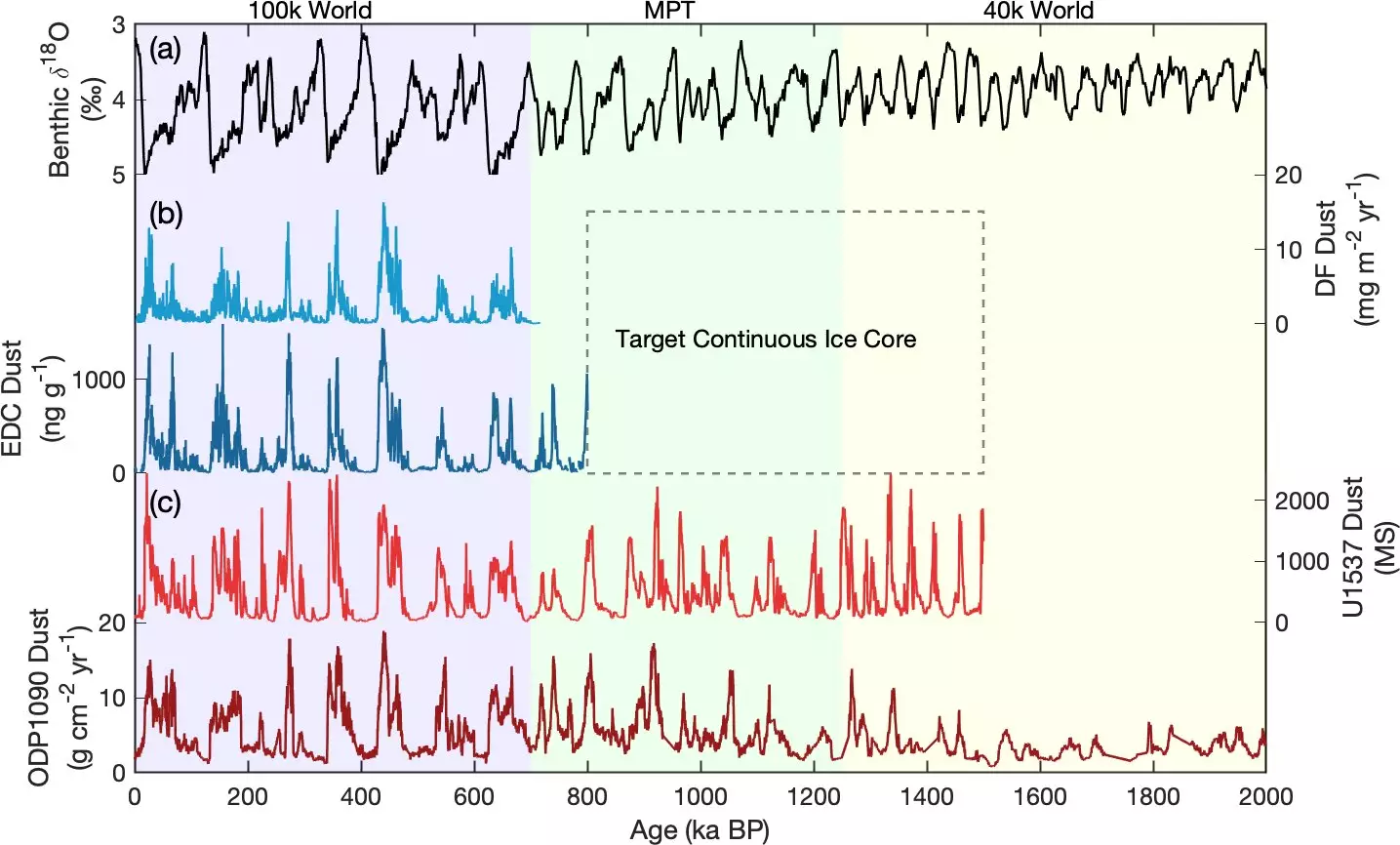Throughout Earth’s extensive geological history, our planet has undergone significant climatic transformations, including periods dominated by vast ice sheets. Ice cores serve as invaluable archives, preserving ancient climate data through layers of ice that have condensed over millennia. These frozen records allow scientists to delve into the past and extract insights about the conditions that prevailed at different points in time. The analysis of ice cores, with their unique geochemical signatures and inclusion of dust and debris, enables researchers to reconstruct past climates and understand the forces driving environmental changes.
An intriguing aspect of ice cores is the dust they contain. Variations in dust concentration can provide crucial indicators of past environmental conditions. During glacial periods, the exposure of continental shelves and drier climates results in increased aridity, leading to higher quantities of dust being transported across the globe. The examination of these dust particles can offer valuable context about the climatic dynamics at play during the periods of ice coverage, shedding light on how atmospheric conditions interact with terrestrial processes.
Currently, the longest continuous ice record from Antarctica, obtained through the European Project for Ice Coring in Antarctica at Dome C, dates back an impressive 800,000 years. However, an ambitious international initiative aims to further extend this record to 1.5 million years. This extended timeframe is crucial for understanding the cyclical nature of Earth’s climate, including transitions between glacial and interglacial states. Notably, scientists recognize that prior to 1.2 million years ago, climate cycles occurred approximately every 41,000 years. Following this era, cycles shifted to their current pattern, characterized by roughly 100,000-year intervals. Such research is critical for discerning climate patterns over multiple timescales.
However, extending the ice record presents several challenges. The dynamic movements of glaciers can distort ice layers, while basal melting may obliterate critical historical records. As a result, identifying suitable drilling sites requires meticulous reconnaissance and extensive planning to ensure the integrity of the ice core data.
A pivotal study published in “Climate of the Past” has spotlighted the International Ocean Discovery Program Site U1537, located near South America, as a promising candidate for examining marine dust content. Dr. Jessica Ng and her team from the Scripps Institution of Oceanography undertook a comparative analysis of the marine dust found in ice cores from the southern Atlantic. By correlating these dust samples with those from Site U1537, they sought to establish the provenance and age correlation with notable ice deposits from Antarctica’s Epica Dome C. This research not only bolsters our understanding of Oldest Ice but also charts the historical movement of marine dust across the Southern Hemisphere.
The correlation data revealed a strong match between the dust records from sites 1090 and U1537 dating back to 800,000 years. However, discrepancies beyond this point signal a potential variability in dust influx, likely influenced by regional climatic conditions. This variability highlights the complexity in deciphering past climate events and emphasizes the need for further study.
A particularly significant goal of the ongoing research is to elucidate the mid-Pleistocene transition, a turning point in the glacial-interglacial cycle. The potential driving mechanisms behind this transition have been previously suggested—inclusive of the role of eroding regolith, which fosters greater ice sheet development, and tectonic shifts contributing to glacial cooling. Yet, the precise causal pathways remain unclear, underscoring the necessity for further investigation into these phenomena.
As the research progresses, the implications stretch far beyond mere academic curiosity; recognizing the driving factors behind natural climate fluctuations informs our understanding of contemporary climate issues. Achieving a comprehensive grasp of how Earth’s climate has historically behaved could ultimately guide our responses to current change and challenges, making this scientific pursuit not only historical but urgently relevant.
Ice cores are more than just natural formations of ancient snow; they are portals into our planet’s complex climate history. As scientists endeavor to unlock the secrets of the Oldest Ice, the insights gained will significantly contribute to our understanding of Earth’s climatic past, enriching our knowledge about the cycles that influence global ecological systems. In an era of climate uncertainty, the lessons learned from these frozen archives may prove indispensable in navigating the challenges that lie ahead.

